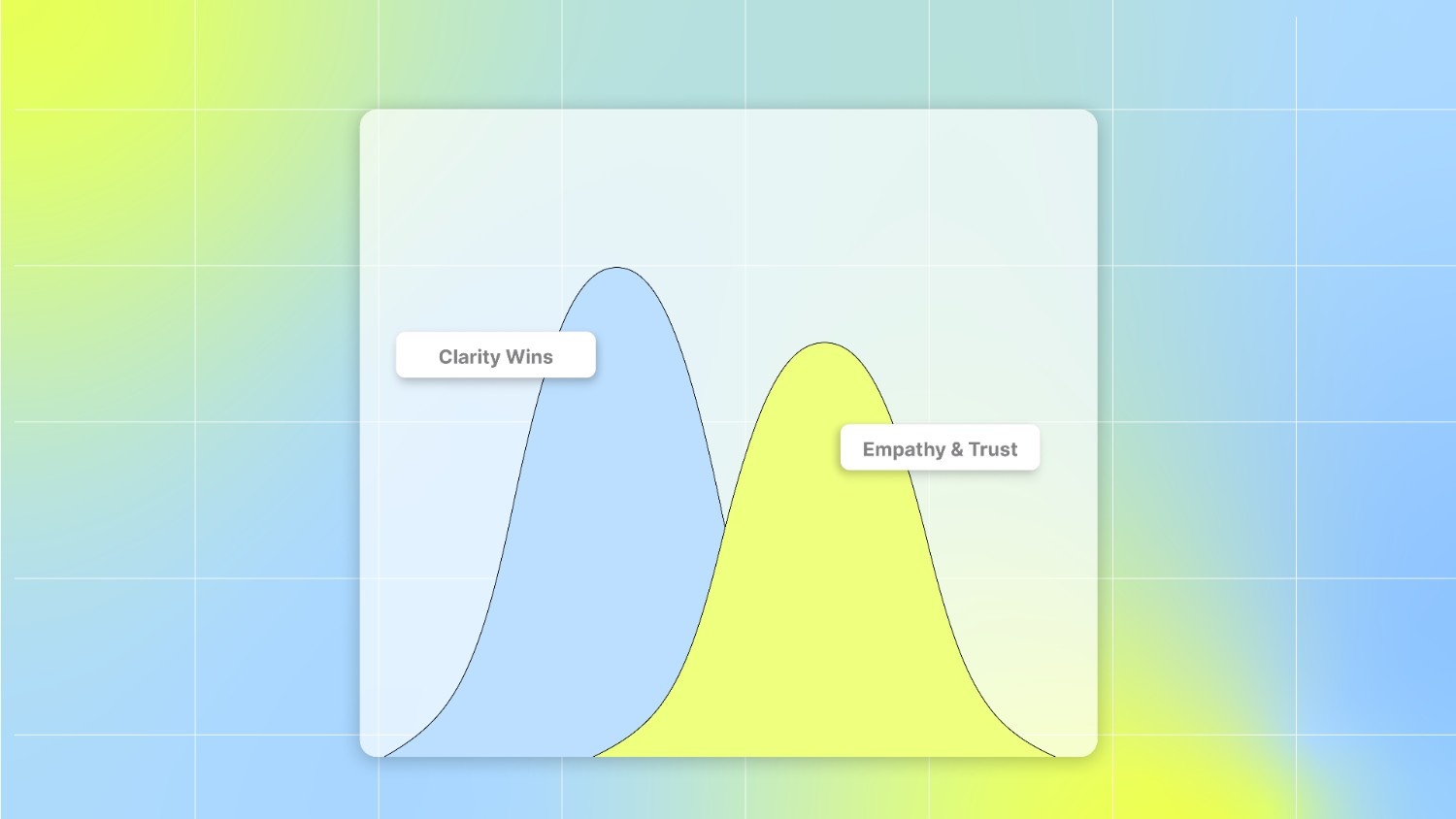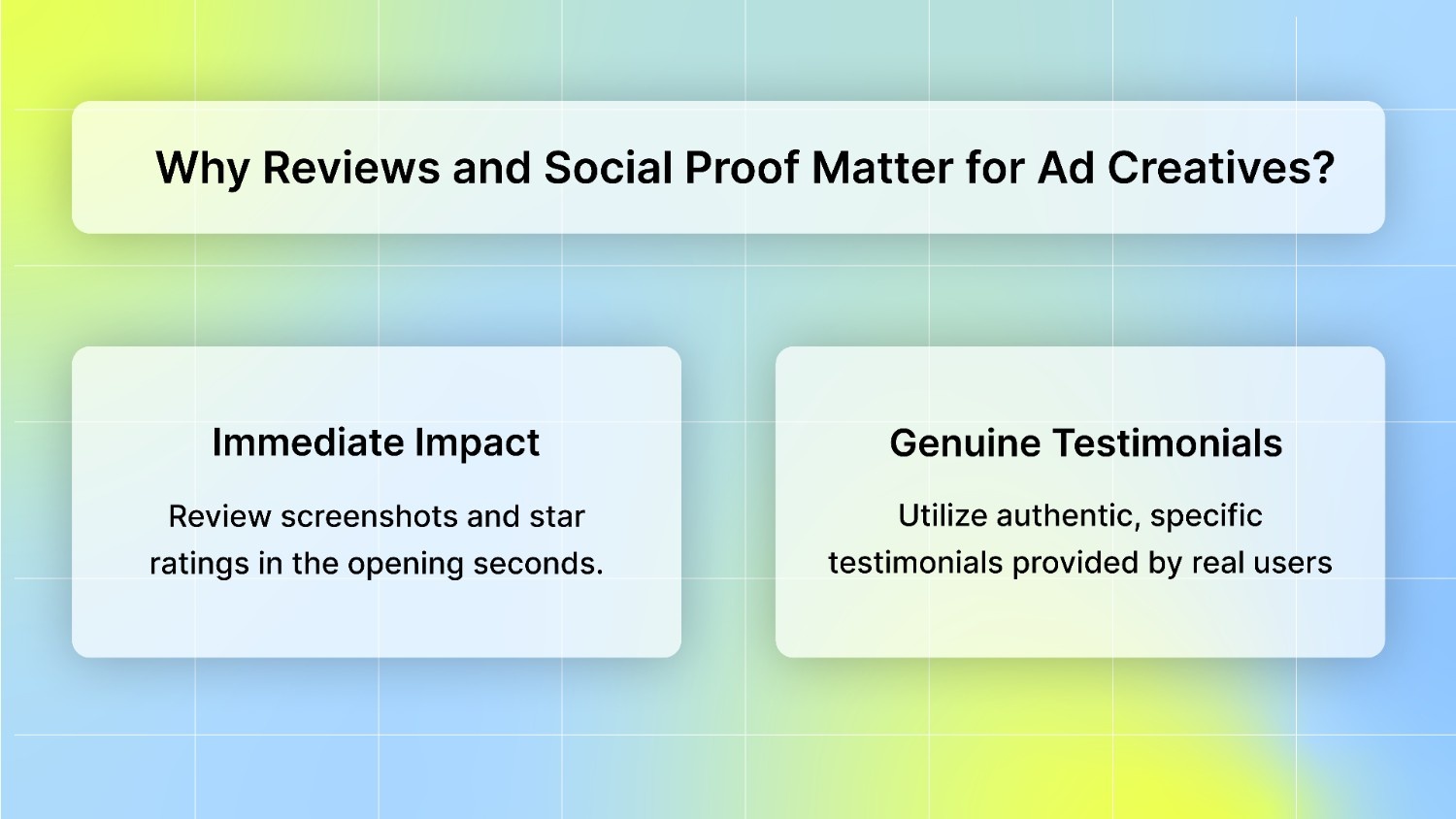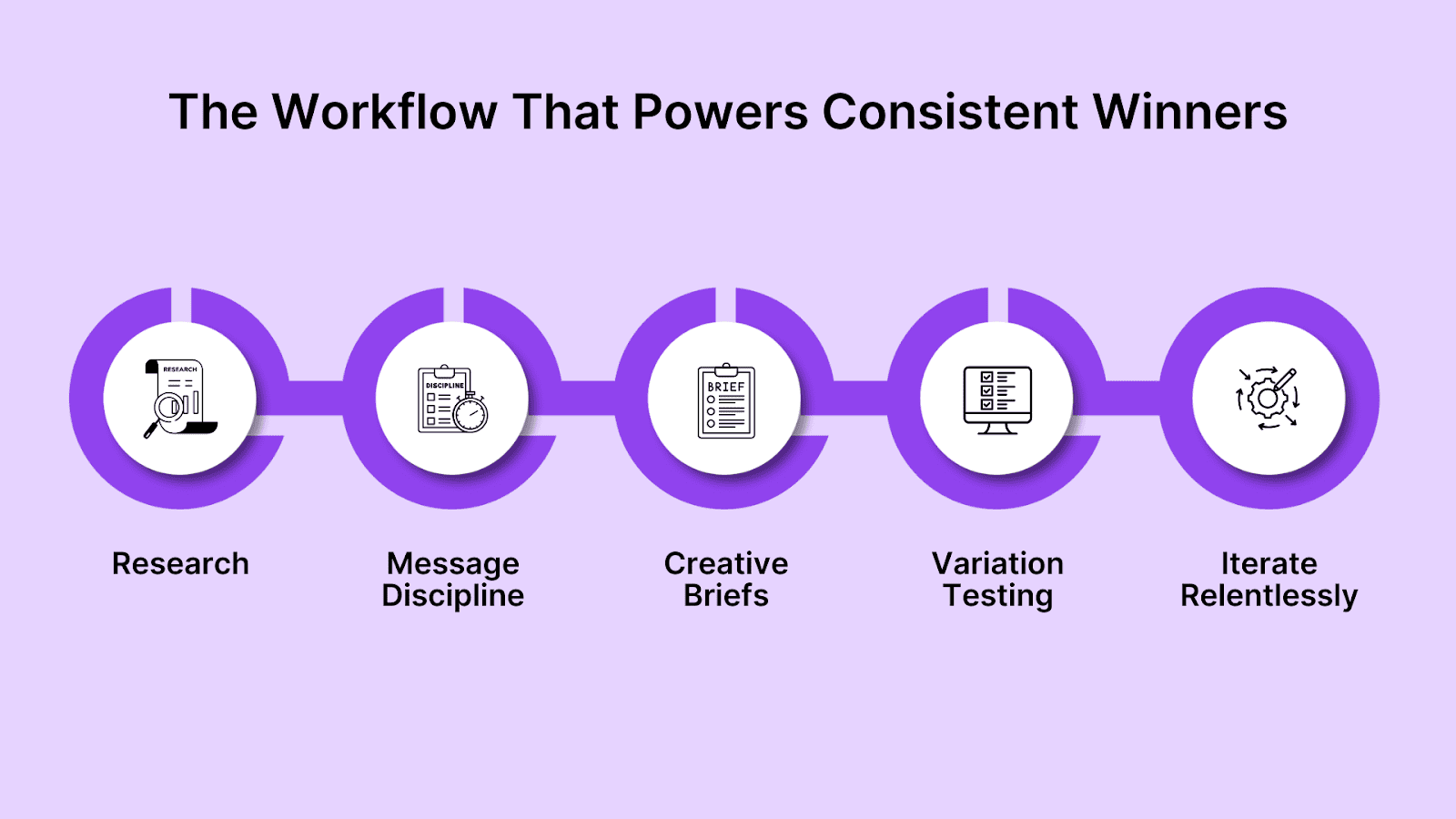How to Create Ads That Stop the Scroll: Top Tips for Success in 2025
Capturing consumer attention online has become an escalating arms race. Brands are now investing millions just to be seen for a split second.
In this climate, creative strategy isn’t a perk; it’s mission-critical. The vast ocean of content on platforms like TikTok, Instagram, Meta, and YouTube means that most ads go largely ignored, earning little more than a fleeting glance.
Yet, high-performing ad creative isn’t about luck. Creative strategists apply a blend of art, psychology, and data to engineer ads that not only stop the scroll but convert fleeting attention into explosive brand growth. Their expertise is the engine behind today’s top campaigns, blending advanced audience insights with a rigorous creative process designed for adaptability.
This guide details expert knowledge and real-world tactics for 2025, providing actionable methods to cut through the noise and maximize both reach and impact.
The Importance of the Hook for Ad Creatives
The digital ad space is a frenetically spinning carousel; you get one shot, often under a second, to force someone to look up, or, more precisely, stop their scroll.
The hook is the opening sequence of your ad: it’s the difference between instant oblivion and instantaneous attention.
Massive datasets from TikTok and Meta confirm: “thumb-stop” rates are dictated by the first 0.3 to 2 seconds of content. Ads with compelling hooks see exponentially higher engagement: if your hook fails, it doesn’t matter how good the rest of your ad is; most users will never see it.
The hook is the very first few seconds with visual and/or text that grabs, surprises, or creates curiosity. In a digital environment where the average user views perhaps hundreds of posts/stories per session, ad hooks need to disrupt habitual scrolling behavior.
Types of Hooks
Top-performing hooks come in various forms, but all share a few traits: they’re pattern interrupters, immediately relevant, and visually or conceptually distinct.
Unexpected/Surprising Elements:
Humor: Think creative sight gags, self-deprecating jokes, or absurdist set-ups (e.g., “dog FaceTiming another dog”).
Visual Surprises: Unusual camera angles, rapid zooms, special effects, or props that don’t quite belong (e.g., pouring paint over perfume bottles).
Contrarian Statements: Opening with a challenge to common beliefs (“Most ads are lying to you…”) or a provocative question.
Teasing the Product:
Cliffhangers: Hints at something to be revealed (“Don’t spill my secret…”) encourage viewers to keep watching out of curiosity.
Partial Reveals: Show only a part of the product, or use obscured/unusual setups that prompt the viewer to wonder, “What’s this about?”
Pro Tip:
Professional teams systematically A/B test up to 20 different hooks per product before scaling winners. Utilize analytics platforms (e.g., Segwise, TikTok Creative Center) to identify which hooks yield the most significant initial engagement (“hook rate”).
Pattern emergence is key. If a particular style of hook is overused in your vertical, the novelty fades, and performance drops. You should track not just what works, but what works differently than the market norm.
Balancing High-Quality Visuals With Relatability

A perennial myth in UGC advertising is that “raw” content consistently outperforms professional visuals.
The truth is more nuanced: today’s highest-performing ads are authentic, but intentionally elevated. You should engineer content that feels spontaneous, yet speaks to deliberate brand cues, including aesthetic consistency, clarity, and emotional resonance.
1. Bright, Consistent Lighting
Natural daylight remains the preferred choice for lighting, as it offers a balanced, soft light that enhances the clarity and appearance of products. For optimal results, shoot in rooms with north- or south-facing windows, which offer consistent and diffuse daylight.
Additionally, setting the white balance to 5600K ensures the light appears natural and true to color. This avoids harsh shadows and color shifts, making products stand out while faces appear healthy and inviting.
For “elevated UGC,” teams often use iPhones with attached external mics, portable LED panels, and even subtle ND filters for exposure control. The output is familiar but visually pleasing, erasing the “amateur” look without appearing like a big-budget ad.
How to Maintain High Brand Standards in UGC
Brands with luxury or premium positioning may fear UGC will “downgrade” their visual identity. The reality is, brand standards are upheld by environment, composition, and color, not just by camera quality:
Shoot UGC in carefully curated settings aligned to brand tone (e.g., modern kitchens for cookware, aspirational bedrooms for bedding).
Use props and backdrops that reinforce visual mood boards and seasonal themes.
Regularly calibrate or color-match final edits to ensure consistency, even from creator-generated input.
2. Aesthetic Appeal
Aim for settings that are lived-in but unmessy. For instance, a well-lit desk, a pristine countertop, or an inviting living room all signal quality without feeling staged.
Motion and depth keep single-lens phone footage dynamic: slow pans, depth-of-field play (with Portrait Mode), or wide-to-close cut transitions mimic more advanced setups.
Avoid polished commercial cameras for in-feed content. Instead, use mobile phones (e.g., iPhone 13/14 Pro) with basic giros and sunlight control; this achieves the sweet spot of “relatable but premium.”
3. Authenticity
There’s a sharp difference between authentic delivery and amateur production.
The highest-converting ads today are performed by creators or actors trained to deliver genuine reactions, micro-expressions, and imperfect speech (such as minor stumbles and improvisational asides), evoking true believability.
Avoid scripting language that sounds “ad-like.” Instead, coach talent to speak as they would to a close friend, referencing real-life situations or using personal anecdotes.
Pitfalls to Avoid:
Over-rehearsed or over-produced UGC sticks out for the wrong reasons; savvy audiences spot scripted testimonials from a mile away.
On the other hand, under-produced (grainy, shaky, poorly lit) ads don’t build trust and may suppress conversion rates.
Pro Tips:
For B2C, blend actor comfort with small, genuine moments, such as hesitations, laughter, and interactivity with the product (rather than reciting specs).
Always strike a balance between polish and relatability: the ideal ad looks and feels like an aspirational recommendation and not reality TV, nor a pharmaceutical spot.
Why Product Visibility Matters for Ad Creatives
Too many brands make the mistake of hiding the product, only revealing it after a lengthy setup. In today’s attention economy, this is a guaranteed way to lose recall and erode your ROI. Empirical evidence from top creative analyses makes this clear:
Early and Consistent Product Presence: Ads where the product is shown within 2–3 seconds and remains visible throughout result in higher watch times, better retention, and significantly increased brand recall.
Memorability: Consistent product presence, even in peripheral areas, leaves a lasting impression on the viewer’s mind through packaging and use-case scenarios. This is essential for:
Repeat purchases (“I recognize that box on the shelf”).
Impulse conversions (“I just saw this on TikTok, it must be popular!”).
Silent Messaging: With many platforms defaulting to sound-off autoplay, continual product presence ensures the ad “reads” even without audio cues.
Optimal Timing
First 2-3 Seconds: The product (or branding/logo) should always be present. This ensures viewers immediately connect the ad content with your solution, even if they scroll before the narrative develops.
Throughout the Ad: Change up the environment, angle, or use case, but keep the product central. Intercut “aesthetic” shots (product alone in a scene) with “usage” shots (product in action).
Pro Tip:
Showcase the product in action: use, unboxing, context-of-use, and real-life environments. Opt for dynamic images over static ones, emphasizing motion and interaction.
Reinforce recognition by showing the product in unusual settings as well as typical ones; this multiplies the semantic “footprints” your brand creates.
For physical goods, use close-ups of texture, fit, or function (e.g., a shot of a skincare product’s texture on skin, a lock clicking shut, an LED turning on).
For digital services, overlay UIs or live screen recordings should be framed within relatable real-world usage scenarios (e.g., browsing an app while sitting in a coffee shop).
Also Read: Cracking the Code: How Dreamy Room Gained 19M+ Downloads with Winning Creatives
Why the Problem-Solution Format Drives Results

The most successful ads do more than just showcase a product; they also convey a message. They tap into real user pain points and offer a clear solution. High-impact creative consistently follows a problem-solution arc, which builds instant relevance and shows your audience, “Hey, this was made for you.”
Clarity Wins: Audiences need to understand what you’re solving for them within the first few seconds. Ads that immediately identify a relatable struggle (“Tired of sweating at night?” or “Is meal prep a hassle?”) outperform those that are vague or overly aspirational.
Empathy and Trust: By articulating a challenge your audience faces, you establish an emotional connection with them. When your product is presented as a straightforward solution, viewers are more likely to stay and consider a conversion.
Key Tips:
Identify 1-2 core problems your product addresses. Don’t try to solve everything at once.
Show real scenarios. If you’re advertising a cleaning product, demonstrate it tackling an actual mess.
Lead with the user/customer’s need, not with brand features.
Pro Insight:
Organic TikToks often skip this narrative clarity, which is why raw influencer content rarely translates as top-performing paid ads. A professional creative strategy layers in explicit problem-solving, rather than relying on audiences to connect the dots.
The Psychology of Pacing in Scroll-First Platforms
Social feeds are chaotic and rapid-fire; ads that match this context with quick, dynamic editing see significantly higher completion rates. On TikTok and Meta, fast-paced scene changes (every 1–2 seconds) help maintain attention and elevate watch time and conversions.
Scene Changes: Use smash cuts, zooms, and jump cuts. Even simple testimonials can utilize rapid in/out zooms or switch angles to enhance dynamism.
Engagement Correlation: Data suggest that shorter scene duration directly correlates with increased hold rate and return on ad spend, especially among users under 35.
Pro Tip:
If in doubt, cut faster than feels comfortable. Audiences, especially younger ones, process information and visuals faster than most brands realize. Test edits with multiple pacing options to discover your true sweet spot.
Trust-Building: Why Reviews and Social Proof Matter for Ad Creatives

Testimonials and recognizable 5-star ratings provide critical credibility and assurance, especially for untested brands or new product features. Here are some methods that you can try:
Immediate Impact: Incorporate review screenshots and star ratings in the opening seconds. Do not bury them in the middle or at the end.
Genuine Testimonials: Utilize authentic, specific testimonials provided by real users or well-coached actors who are comfortable with natural, imperfect delivery. Avoid overly scripted moments.
Formats That Work:
Overlay 5-star review graphics at the beginning of your video.
Quick-cut “mashups” of multiple testimonials.
Include PR shoutouts or “as seen in” media badges if available.
Pro Insight:
For service or SaaS ads, the green-screen format, where a face overlays a site demo with user stories, is proven to boost trust and relatability.
Also Read: Guide to Performance Max Creative Specs and Practices
Why Emotional Resonance Converts
Buying decisions on social media are often driven by emotions, rather than rational considerations. The strongest ads don’t just inform; they evoke emotions, whether it’s relief, excitement, FOMO, or joy.
Triggering the Right Emotions: Identify the core feeling your product evokes. For gifts, show emotional unboxing reactions. For wellness, convey relief or transformation.
Impulse Drivers: Under-$50 items are often purchased in moments of emotional peak. Craft your narrative to tap into immediate desires, such as “peace of mind,” “instant upgrade,” or “feel like a hero.”
Pro Tip:
Pair a relatable scenario (“Is your skin always dry after you wash your face?”) with a solution and a visible, authentic user response. When possible, film genuine customer/user reactions, tears, laughter, and surprise during live gift-giving or product demonstrations.
Making Your Desired Action Crystal Clear in all Ad Creatives
Even the most engaging ad will fall flat without a compelling call to action. The viewer needs precise guidance on what to do next; otherwise, their attention simply dissipates.
Directness: Say precisely what you want: “Buy Now,” “Start your free trial,” “Download the app today.” Avoid vague prompts.
Brand Integration: Display your brand’s logo and a succinct CTA in the final seconds for maximum recall and action.
Pro Tip:
Review your top ads: Do the highest-ROAS spots always have a CTA at the end? If not, test versions that add one and track uplift.
Why Humor and the Unexpected Matter
As ad fatigue rises, only the creative, the weird, or the hilarious break through. Humorous or surprising elements add shareability, prompt discussion in comments, and (when paired with product visibility) create long-term brand love.
Winning Examples:
Skits about real-life frustrations: Your audience relates, you make them laugh, and your product solves the joke’s punchline.
Age filters, props, or visual gags, so long as they’re used to clarify or enhance your pitch, not distract from it.
“Bait-and-switch” stories or irreverent approaches that make your ad stand out, such as a grandma using a face filter to talk about hearing aids.
Warning:
AI-generated creative isn’t (yet) able to deliver nuanced humor or shocking concepts. Human strategists and actors bring the “X-factor” required for viral, comment-driven spots.
Backstage: The Workflow That Powers Consistent Winners

Building breakthrough ads isn’t just about inspiration; it’s a repeatable, feedback-driven process. You can use a methodical approach that combines research, structured briefing, and relentless testing.
Research: Use advanced platforms (such as Motion) to monitor best-in-class, direct competitors. Log top-performing hooks, structures, length, editing style, and narrative arcs.
Message Discipline: For each campaign, distill down to 2–3 key value propositions. Overload kills retention; clarity breeds recall.
Creative Briefs: Provide your creators and editors with detailed, unambiguous briefs, a storyboard, key talking points, and specific visuals or scenes to include.
Variation Testing: For every concept, create multiple variants (with different hooks, visuals, and CTAs) and monitor which combinations drive the desired KPIs.
Iterate Relentlessly: Weekly review sessions allow you to trim, alter, or scale creatives based on precise performance metrics (hook rate, hold rate, click-to-purchase rate, and ROAS). The process never stops.
Pro Insight:
The best creative strategies balance “evergreen” proven templates (problem-solution, testimonial, social proof) with riskier, out-of-the-box concepts tested monthly or even weekly. Your unicorn ad is more likely to emerge from this pipeline than from a single stroke of inspiration.
Also Read: Understanding Creatives in Advertising: Importance and Examples
Your Final Tip: The Work Never Ends
As platforms evolve and audiences become more savvy, you must commit to ongoing testing and learning. No unicorn ad comes from a single brainstorm. Top brands and creative strategists continually analyze metrics such as hook rate, hold rate, click-to-purchase ratio, and ROAS to refine messaging, visuals, pacing, and calls to action.
Additionally, keep a close eye on emerging trends and platform updates. What worked last quarter may not perform tomorrow. You can also invest in performance marketing intelligence tools that unify creative-level analytics across channels.
Ultimately, your competitive advantage lies in blending relentless creativity with data-driven decision making. Furthermore, fueled by robust analytics and agile iteration. This disciplined approach ensures your brand consistently crafts scroll-stopping ads that capture attention and also deliver lasting business growth.
Platforms like Segwise provide a centralized view of which creative elements genuinely drive Return on Ad Spend and conversions, cutting through the noise of fragmented data. With detailed creative analytics and tagging on hook scenes, formats, and other elements that consistently perform, you can confidently scale winners and cut budget waste on underperformers.
Start your journey to more effective, data-driven advertising today. Explore Segwise with a free 14-day trial and see what your creatives can really do.
FAQ
Q: How often should I refresh my ad creatives?
A: Depending on your budget and campaign length, refresh at least every 2-4 weeks. Audience fatigue sets in quickly on fast-paced platforms, so new hooks, visuals, and formats help maintain high engagement.
Q: Can I repurpose organic TikTok content as paid ads?
A: Pure organic content often lacks the clear problem-solution and brand focus needed for paid success. Use organic posts as inspiration, but create dedicated paid ads that follow the strategic elements discussed here.
Q: What if my brand tone feels incompatible with humor?
A: Not all brands suit humor, and that’s okay. Focus on emotional appeal that aligns with your values, whether that’s trust, reliability, luxury, or inspiration. Surprises and storytelling can be subtle yet effective without being comedic.
Q: How do I balance fast editing with conveying complex information?
A: Prioritize which information is critical to include upfront, and use layering techniques (text overlays, short scene cuts) to communicate efficiently. For older audiences or complex products, longer-form, paced storytelling works better.
Q: What about compliance and disclosures?
A: Always include FTC-compliant disclosures, especially for paid testimonials. Use clear, small text disclaimers early in the video to avoid legal risks and maintain brand integrity.
Comments
Your comment has been submitted successfully!